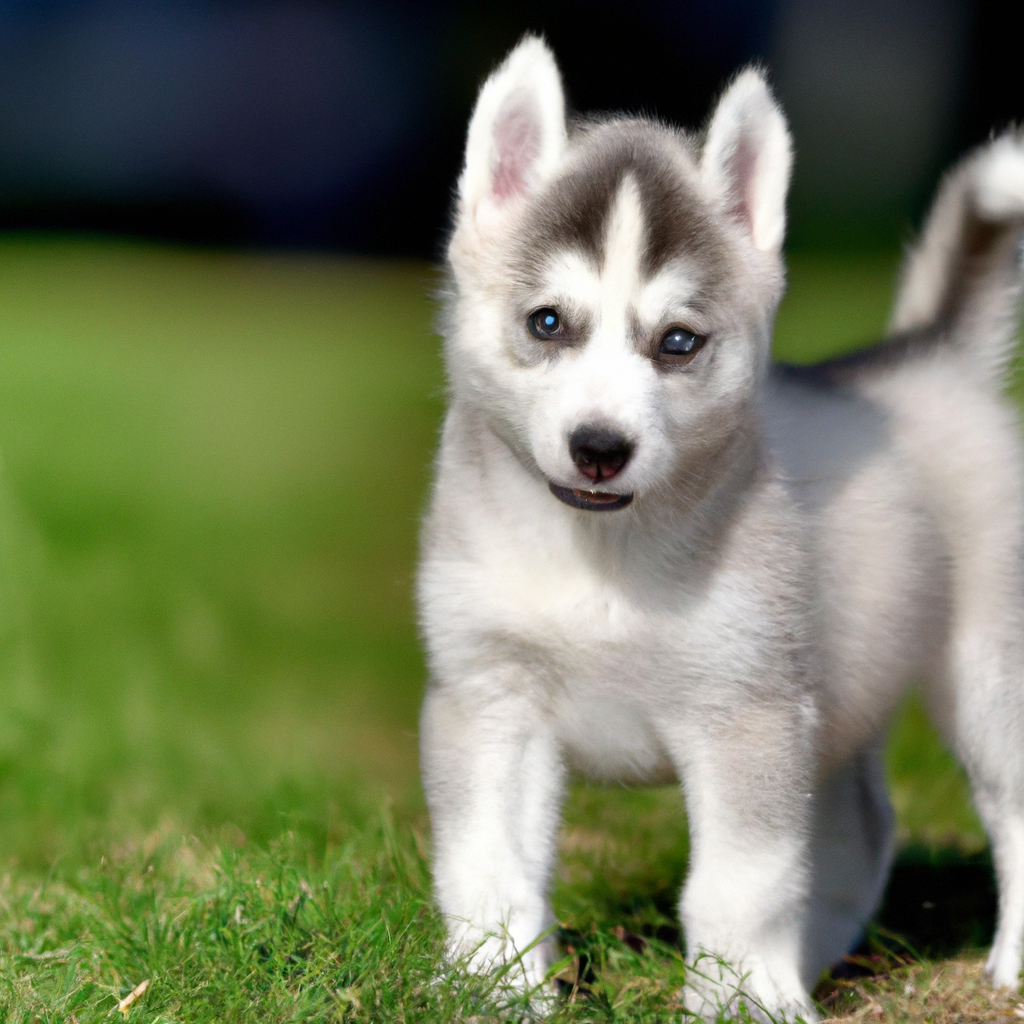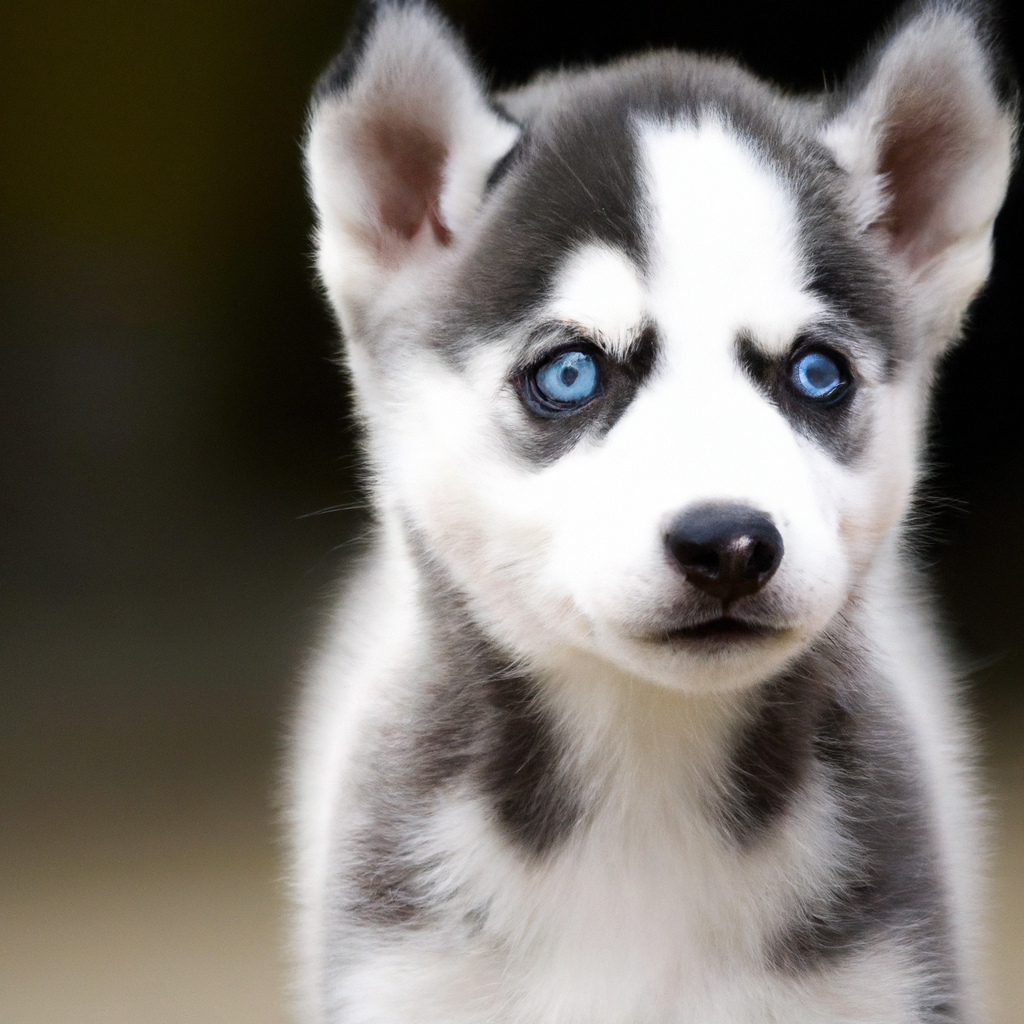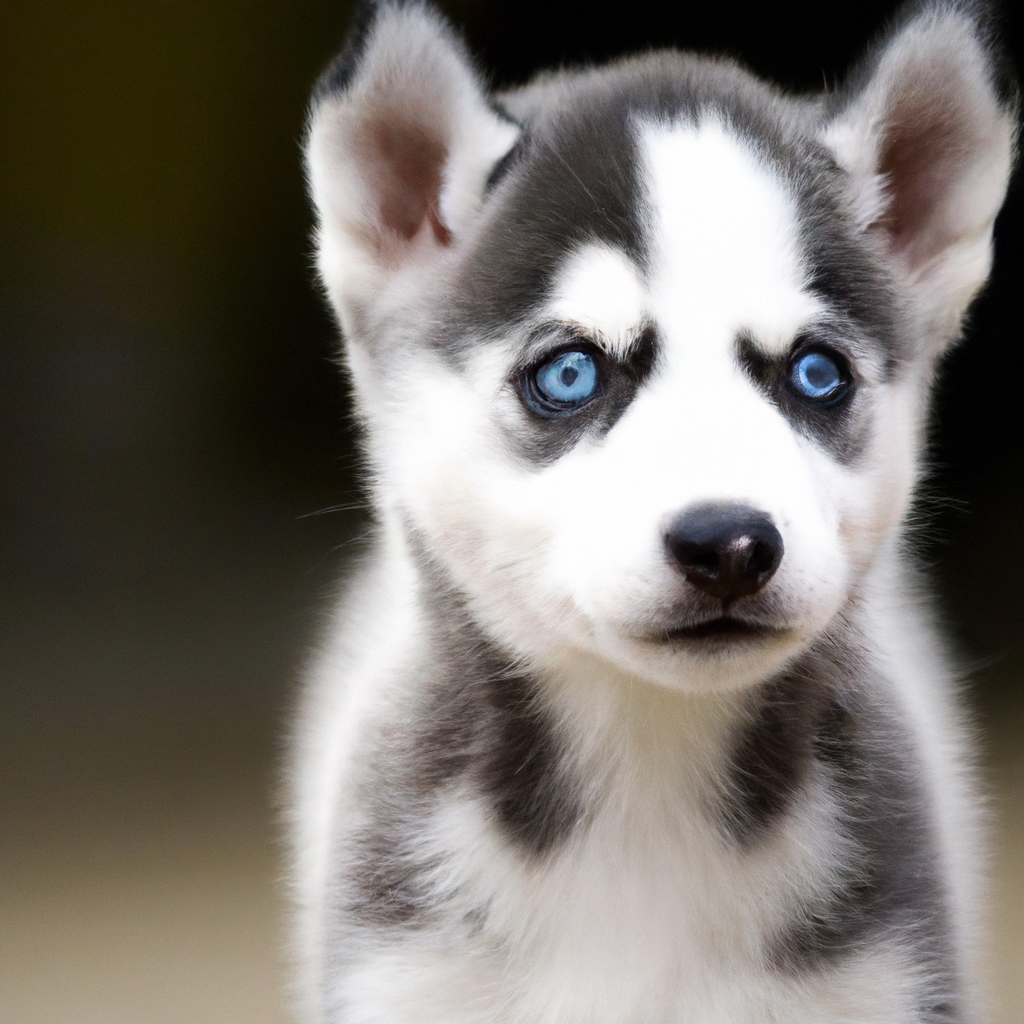So you’ve just brought home your new furry friend, a cute little Husky puppy, and you’re wondering how to train them? Look no further! In this article, we will provide you with essential tips and tricks to help you effectively train your Husky puppy. From potty training to leash manners, we’ve got you covered. Say goodbye to those chewed-up shoes and hello to a well-behaved and obedient companion. Let’s get started on this exciting journey of training your Husky puppy!

Setting the Foundation
Understanding the Husky Breed
Before you can begin training your Husky, it’s important to understand the breed’s unique characteristics and needs. Huskies are intelligent, energetic, and independent dogs that thrive on mental and physical stimulation. They have a strong pack mentality and require a confident and consistent leader. Being aware of these traits will help you tailor your training techniques to meet your Husky’s specific requirements.
Fulfilling Basic Needs
To ensure a successful training journey, it’s crucial to meet your Husky’s basic needs. This includes providing proper nutrition, regular exercise, and plenty of mental stimulation. Huskies are an active breed, so incorporating daily walks, play sessions, and interactive toys is essential. Remember, a tired Husky is a well-behaved Husky!
Creating a Safe and Comfortable Space
Your Husky should have a designated area in your home where they feel safe and secure. Provide a comfortable bed or crate that they can retreat to when needed. Additionally, ensuring your home is free of hazards such as toxic plants, small objects, and open windows will prevent accidents and keep your Husky safe.
Establishing Boundaries and Rules
Defining boundaries and setting clear rules is crucial in training a Husky. Start early by establishing consistent expectations for behavior, such as not jumping on furniture or not begging at the table. Encourage positive behaviors and discourage unwanted ones with a calm and assertive demeanor. Consistency is key in reinforcing these boundaries and rules throughout your Husky’s training journey.
Socializing Your Husky
Introducing to New People
Socialization is a crucial aspect of training for any breed, including Huskies. Properly introducing your Husky to new people will help them develop positive associations and build trust. Start by inviting friends and family members over, allowing your Husky to approach them at their own pace. Reward your Husky for calm and friendly behavior, gradually increasing their exposure to different individuals.
Exposing to Various Environments
To prevent your Husky from becoming fearful or anxious in new environments, expose them to a variety of settings from an early age. Take them on regular outings to different places such as parks, dog-friendly stores, and outdoor events. Gradually increase the level of stimulation and ensure positive experiences by offering treats and praise for good behavior.
Encouraging Positive Interactions with Other Dogs
Huskies are generally social dogs, and proper socialization with other dogs is important for their development. Arrange playdates with friendly, well-behaved dogs and monitor the interactions closely. Encourage positive play and correct any inappropriate behavior, such as excessive roughness or aggression. With time and patience, your Husky will learn how to interact appropriately with canine companions.
Teaching Hand Signals and Verbal Cues
Huskies are highly intelligent and thrive on mental stimulation. Teaching them hand signals and verbal cues alongside traditional commands can enhance their training and communication skills. Start by associating simple hand signals and verbal cues with basic commands such as sit, stay, and come. Consistency and positive reinforcement will allow your Husky to understand and respond to these signals effectively.
House Training
Establishing a Routine
Consistency is of utmost importance when house training your Husky puppy. Establishing a routine for feeding, taking them outside to eliminate, and monitoring their water intake will help prevent accidents. Take your Husky outside to the designated elimination area after meals and at regular intervals throughout the day. Remember, patience and consistency are key during this process.
Using Crate Training
Crate training is an effective method to assist with house training and provide your Husky with a safe space. Introduce the crate gradually, allowing your pup to explore it at their own pace. Use positive reinforcement, such as treats and praise, to encourage them to enter willingly. Make the crate a positive association by providing comfort items like blankets or toys. Use the crate for short periods initially, gradually increasing the time as your Husky becomes comfortable.
Rewarding Outdoor Elimination
When your Husky eliminates outdoors, be sure to offer immediate praise and rewards. Use positive reinforcement such as treats or verbal praise to reinforce this desired behavior. Consistency is key during this training phase, and rewarding your Husky each time they eliminate outside will help solidify this habit quickly.
Handling Accidents Correctly
Accidents are a normal part of the house training process, especially during the early stages. When accidents happen, it’s important not to scold or punish your Husky, as this may lead to fear or anxiety related to elimination. Instead, calmly clean up the mess using an enzymatic cleaner to remove any lingering odors. Revisit your training routine, ensuring you are providing enough opportunities for your Husky to eliminate outside.

Basic Obedience Training
Teaching Command Words
Basic obedience training is essential for ensuring your Husky understands commands and behaves appropriately. Start with simple commands like sit, stay, and come. Use consistent command words and associate them with specific actions. Huskies are intelligent dogs, so with repetition and positive reinforcement, they will quickly learn these basic commands.
Using Positive Reinforcement
Positive reinforcement is a highly effective training method for Huskies. Use praise, treats, and petting to reward your Husky for obeying commands or exhibiting good behavior. Consistency and timing are crucial when utilizing positive reinforcement, as it helps your Husky understand which behaviors are desirable and encourages them to repeat those actions.
Understanding Pack Leadership
Huskies have a strong pack mentality and naturally seek a leader. As the owner, it’s essential to establish yourself as the pack leader and earn your Husky’s respect. Set clear rules and boundaries, and consistently enforce them with calm assertiveness. Avoid using harsh punishments or physical force, as this can damage the trust and bond between you and your Husky.
Consistency in Training Sessions
Consistency is vital when training a Husky. Establish regular training sessions, keeping them short and engaging. Huskies can become easily bored, so using a variety of training methods, incorporating playtime, and providing mental stimulation will keep them motivated. Consistency in training will help reinforce commands and behaviors, resulting in a well-trained and obedient Husky.
Leash Training
Choosing the Right Leash and Collar
Selecting the appropriate leash and collar is crucial for effective leash training. Opt for a sturdy, well-fitting collar or harness that provides comfort and control. Consider using a front-clip harness to discourage pulling and reduce strain on your Husky’s neck. Choose a leash length that allows your Husky freedom of movement while still maintaining control.
Introducing the Concept of Walking on a Leash
Introduce the concept of walking on a leash gradually to your Husky. Start by allowing them to familiarize themselves with the leash and collar in a calm and controlled environment. Use positive reinforcement, treats, and praise, to reward your Husky for wearing the leash and walking beside you. Keep initial sessions short and slowly increase the duration as your Husky becomes more comfortable.
Training Loose Leash Walking
Teaching your Husky to walk politely on a leash without pulling requires patience and consistent training. Utilize techniques such as stopping whenever your Husky pulls, encouraging them to return to your side before proceeding. Reward and praise your Husky for walking beside you without tension on the leash. With regular practice and positive reinforcement, your Husky will learn to walk on a loose leash.
Preventing Pulling and Lunging
To prevent pulling and lunging during walks, it’s important to address the root causes of these behaviors. Ensure your Husky is properly exercised and mentally stimulated before walks to reduce excess energy. Use positive reinforcement to reward your Husky for walking calmly and redirect their attention when they become fixated on distractions. Consistency and patience are key in curbing pulling and lunging behaviors.
Crate Training
Choosing the Appropriate Crate
When crate training your Husky, it’s important to select the appropriate crate size. Choose a crate that allows your pup to stand up, stretch, and turn around comfortably. Huskies prefer snug spaces, so opt for a crate that provides a cozy environment without being too confining.
Creating a Positive Association with the Crate
Make the crate a positive and inviting space for your Husky by using treats, toys, and praise. Introduce them gradually to the crate, allowing them to explore and associate it with positive experiences. Place comfortable bedding inside and leave the door open initially, encouraging your Husky to enter voluntarily.
Gradual Introduction and Lengthening Crate Time
Start by closing the crate door for short periods, gradually increasing the duration as your Husky becomes comfortable. Provide toys or chews to keep them occupied while inside the crate and reinforce positive behavior with treats and praise. Avoid using the crate as a form of punishment and never force your Husky inside, as this can create a negative association.
Proper Use of Crate for House Training and Safety
Crate training can be a valuable tool for house training and ensuring your Husky’s safety. When you are unable to supervise your pup, place them in the crate to prevent accidents and destructive behavior. Always ensure the crate is properly ventilated and never leave your Husky crated for extended periods. The crate should be used as a safe space, providing comfort and security rather than confinement.
Handling Separation Anxiety
Gradual Departures and Returns
Separation anxiety can be a common challenge for Huskies. To help your pup cope with your departures, practice gradual departures and returns. Start with short absences, gradually lengthening the time you are away until your Husky becomes more comfortable being alone. When returning home, remain calm and avoid creating too much excitement, as this can reinforce their anxiety.
Desensitization to Absence Cues
Huskies often associate specific cues with your departure, such as putting on shoes or grabbing your keys. Desensitizing your Husky to these cues can help alleviate their anxiety. Practice performing these actions without actually leaving, so your Husky no longer associates them solely with your absence. This will help create a more relaxed environment when it’s time for you to leave.
Using Toys and Chews to Provide Distraction
Providing your Husky with engaging toys and chews can help distract them from their anxiety when you are away. Interactive puzzle toys and durable chews can keep your pup mentally and physically stimulated, reducing their stress levels. Rotate these toys regularly to prevent boredom and maintain their effectiveness.
Consulting with a Professional if Needed
If your Husky’s separation anxiety persists despite your best efforts, consider consulting with a professional dog trainer or behaviorist. They can assess your Husky’s behavior and provide specialized guidance and techniques to address their anxiety. Remember, it’s important to approach separation anxiety with patience and empathy, as it can take time to overcome this issue.
Curbing Destructive Behavior
Understanding Root Causes
Destructive behavior can occur when a Husky is bored, anxious, or seeking attention. Understanding the root cause behind their behavior is essential in addressing and preventing destructive acts. Identifying triggers such as lack of exercise, separation anxiety, or insufficient mental stimulation will help you design an effective training plan.
Providing Mental and Physical Stimulation
To prevent destructive behavior, it’s crucial to provide your Husky with plenty of mental and physical stimulation. Engage your pup in daily exercise sessions, such as long walks, runs, or playtime in the yard. Additionally, incorporate interactive toys, puzzle feeders, and challenging training sessions to keep their mind occupied and prevent boredom.
Avoiding Reinforcement of Undesirable Behaviors
It’s important to avoid unintentionally reinforcing destructive behaviors in your Husky. This means not giving attention or reacting strongly to their destructive acts. Instead, redirect their attention to appropriate toys or activities and reward positive behavior. Consistency in redirecting their focus will help your Husky understand what is acceptable and what is not.
Redirecting and Offering Alternatives
When your Husky exhibits destructive behavior, redirect their attention to acceptable alternatives. Provide them with toys specifically designed for chewing and mental stimulation. If your Husky starts chewing on furniture or other items, calmly remove the object and offer a suitable replacement. Positive reinforcement and redirection will gradually teach your Husky what is appropriate to chew on.
Correcting Unwanted Behaviors
Avoiding Punishments and Harsh Training Methods
When correcting unwanted behaviors, it’s essential to avoid punishments and harsh training methods. Huskies respond best to positive reinforcement and rewards. Using punishment can create fear and anxiety, damaging the trust and bond between you and your Husky. Focus on redirecting and reinforcing positive behaviors rather than punishing undesirable ones.
Utilizing Positive Reinforcement and Rewards
Positive reinforcement is key when correcting unwanted behaviors. Reward your Husky for exhibiting good behavior through treats, praise, and play. By providing positive reinforcement, you are encouraging your Husky to repeat the desired behaviors. Consistency and timing are important, as rewarding immediately after the desired behavior solidifies the association.
Consistency and Timing in Correction
Consistency in correcting unwanted behaviors is vital to prevent confusion for your Husky. Correct the behavior immediately, using firm and assertive cues or commands. Timing is crucial so your Husky can associate the correction with the behavior. This consistency will help your Husky understand which behaviors are not acceptable and allow for effective correction.
Seeking Professional Guidance if Necessary
If you are experiencing difficulties in correcting unwanted behaviors, seeking professional guidance can be beneficial. A professional dog trainer or behaviorist can assess your Husky’s behavior, provide tailored techniques, and offer ongoing support. They can help you address specific issues and ensure training methods are appropriate for your Husky’s needs.
Continuing Education and Training
Advanced Obedience Commands
Once your Husky has mastered basic obedience commands, consider advancing their training by introducing more complex commands. Teach them tricks like roll over, shake hands, or play dead. These advanced commands provide mental stimulation and strengthen the bond between you and your Husky.
Participating in Agility or Training Classes
Engaging in agility or training classes with your Husky can be a fun and rewarding experience for both of you. These classes offer structured training sessions, socialization opportunities, and mental stimulation for your Husky. Additionally, they provide a supportive environment where you can receive guidance from experienced trainers.
Engaging in Mental and Physical Challenges
Continue to challenge your Husky’s mind and body through various activities. Engage in interactive games, scent work, or obstacle courses to keep them mentally and physically stimulated. These challenges provide an outlet for their energy and prevent boredom, resulting in a more well-rounded and satisfied Husky.
Maintaining Regular Training Sessions
Consistency is key in maintaining your Husky’s training. Even after your Husky has reached an advanced level of training, it’s important to continue regular training sessions. These sessions keep their skills sharp and reinforce obedience and good behavior. Incorporate training into your everyday routine to ensure your Husky remains well-trained and responsive.
In conclusion, training a Husky puppy requires patience, consistency, and understanding of their unique characteristics. Setting the foundation, socializing, house training, obedience training, leash training, crate training, handling separation anxiety, curbing destructive behavior, correcting unwanted behaviors, and continuing education are all important components of a comprehensive training plan. With love, positive reinforcement, and a friendly approach, you can raise a well-behaved and happy Husky companion.
